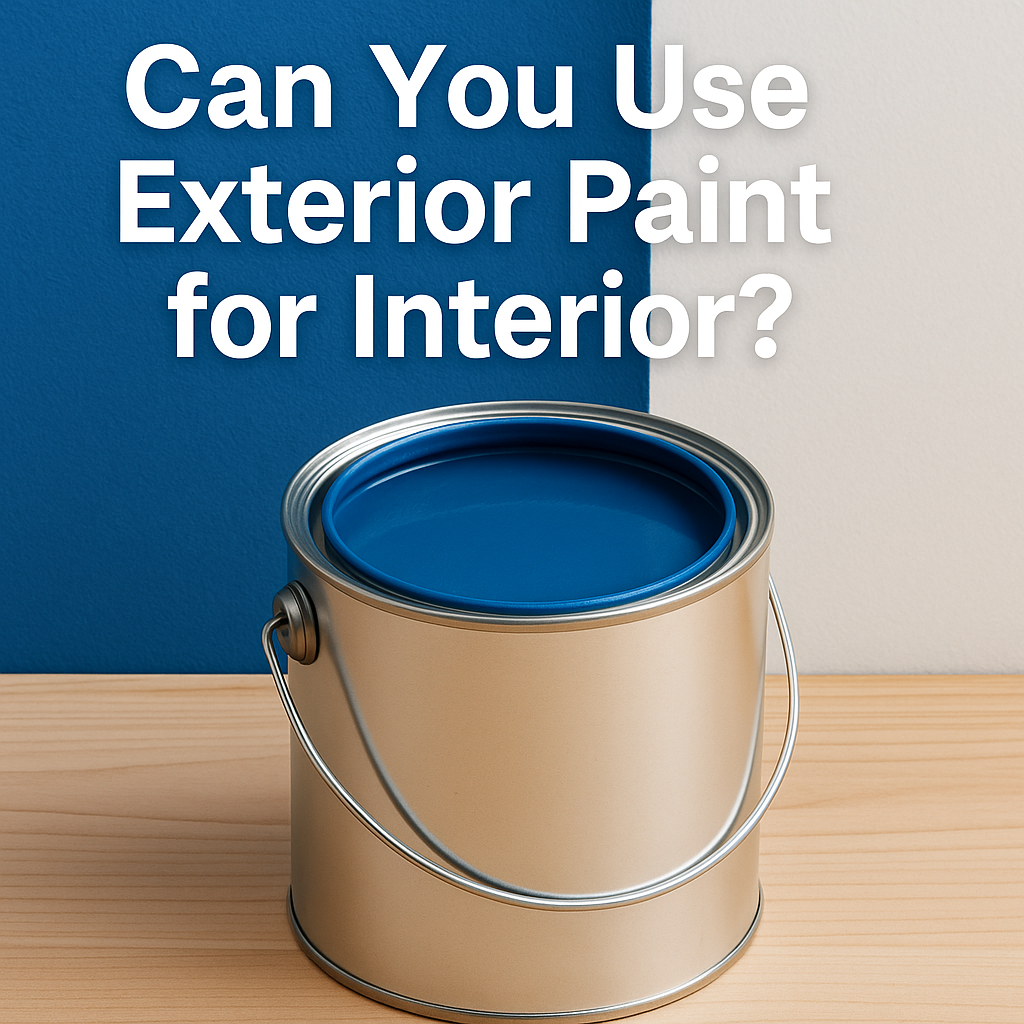Can You Use Exterior Paint for Interior?
Introduction
You’ve got a leftover can of exterior paint from your home’s siding or deck project—why not use it to repaint that interior accent wall and save some money? It’s an understandable thought, but when it comes to the right choice of paint for indoor spaces, there are important differences you need to know. At SMC Services LLC, we see many homeowners in the DMV region weighing this question—and we’re here to guide you through the pros, cons, and best practices.
What’s the Difference Between Interior and Exterior Paint?
The formulation of exterior and interior paints diverges significantly because they’re designed for very different environments:
- Exterior paint must resist UV rays, rain, extreme temperature swings, mildew and moisture.
- Interior paint is made for enclosed environments—less weather exposure, more emphasis on indoor air quality, low odor, low VOCs (volatile organic compounds), and durability suited to living spaces.
- Because exterior paint often includes higher amounts of VOCs and additives (to stand up to outdoor conditions) using it indoors can present air‑quality and finish‑compatibility issues.
Can You Use Exterior Paint Inside?
Short answer: technically yes—but in most cases, no is the right answer. Many painting professionals advise against it for interior living spaces.
Here’s a breakdown:
✅ Possible scenarios where exterior paint might be used indoors:
- In utility areas, detached garages, workshops, or heavily ventilated spaces where the higher VOCs or additives may be less of a concern.
- When you have no other option and the area is non‑living or seldom occupied.
❌ Why it’s generally not recommended for common indoor spaces:
- Exterior paint emits higher levels of VOCs that can linger in closed interior environments, impacting air quality.
- The finish, spread rate, drying time and scrubbability may be inferior for everyday indoor use.
- Some additives (like mildewcides, UV protectants, and thicker binders) are optimized for outdoor use—and may not function as intended on interior walls.
What Happens If You Use Exterior Paint Inside?
Some of the potential issues include:
- Poor indoor air quality: The higher VOC content can cause odors, eye/nose/throat irritation or other issues in enclosed spaces.
- Longer drying and recoating time: Exterior formulas may take longer to dry or recoat indoors, making your project slower.
- Finish & coverage issues: Interior surfaces have different demands (scrubs, scuffs, smoother appearance); the exterior paint may not meet them as effectively.
- Wasted value: Higher cost of exterior paint might not translate into benefits for indoor use, since outdoor durability features are unnecessary inside.
What Should You Do Instead? (SMC Services LLC Recommends)
Here are the best practices we follow and suggest:
- Use true interior paint for your interior walls — Low VOC, designed for indoor conditions, better finish for living spaces.
- Reserve exterior paint for exteriors — siding, exterior trim, patios, decks.
- If you’re tempted to use leftover exterior paint indoors, do a check: Is the space well‑ventilated? Is it a non‐living utility space? If yes, proceed with caution—but understand the trade‑offs.
- Proper surface preparation matters a lot more than just paint choice. A good painter (like SMC Services LLC) will prepare, prime if needed, and apply the correct product for the job.
- Consult a professional—especially if you’re remodeling or repainting large interior areas in the DMV area. We can advise on paint types, finishes (flat, eggshell, satin) and colors that suit your home and environment.
Why Hiring SMC Services LLC Makes Sense in the DMV
When choosing a painting and remodeling partner, especially in the DMV region with its unique climate and building conditions, here’s what sets SMC Services LLC apart:
- Local experience with hotels, condos, homes and commercial spaces across Washington DC, Maryland and Virginia
- Expertise in both interior and exterior painting and remodeling services—ensuring the right product is used in the right setting
- Commitment to safe, high‑quality finishes that consider indoor air quality and durable aesthetics
- Clear communication, professional teams, timely execution
Conclusion
While the idea of using leftover exterior paint inside might seem like a quick and cost‑saving move, it often comes with hidden drawbacks—from air quality issues to finish performance problems. For your home’s interior, trust the right kind of paint and the right professionals. If you’re in the DMV region and planning to refresh your space—whether interior or exterior—reach out to SMC Services LLC. Let us handle the details so you get a beautiful, safe and long‐lasting result.
FAQs
Q: Can you use exterior paint on indoor walls?
Technically yes, but it’s generally not recommended due to higher VOCs and different formulation. Interior paint is better for living spaces.
Q: What is the difference between interior and exterior paint?
Interior paint is formulated for indoor air quality, lower VOCs, smoother finish and scrubbability. Exterior paint is formulated for UV, moisture, weather, and durability outdoors.
Q: What should I do with leftover exterior paint?
You might use it in non‑living spaces like a storage room or detached garage, provided you ensure ventilation and understand it’s not ideal for a living room or bedroom.
Q: Does SMC Services LLC handle both interior and exterior painting?
Yes—SMC Services LLC offers full‐service painting and remodeling in the DMV area, covering interiors, exteriors, and everything in‑between.
Q: How do I choose the right finish for my interior paint?
Consider traffic and usage: e.g., flat or matte for low‑traffic rooms, eggshell or satin for moderate traffic, semi‑gloss for trim or high‑use areas.


.avif)